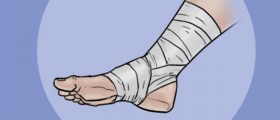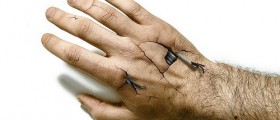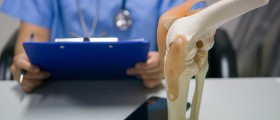
Quadriceps tendonitis is an inflammatory condition of the quadriceps tendon, the tendon which connects the quadriceps muscle to the knee, to be more precise to the kneecap. This medical condition predominantly affects sportsmen and all the people who are engaged in activities which put a lot of strain onto the knee and legs.
Causes of Quadriceps Tendonitis
Inflammation of the quadriceps tendon occurs as a consequence of a stress on the supporting structures of the knee. A variety of activities such as running, jumping etc. may contribute to quadriceps tendonitis. Even though athletes are predominantly affected by quadriceps tendonitis, this medical condition may also affect people who occasionally participate in sports or other recreational activities. Furthermore, inadequate equipment such as inappropriate footwear or even training errors may contribute to the condition. Additional factors including age, flexibility and joint laxity also interfere in the occurrence of the tendinitis. Quadriceps tendonitis may also affect obese people because too much weight can overload the knee muscles and cause imbalance and consequently result in quadriceps tendonitis.
Symptoms of Quadriceps Tendonitis
Typical symptoms of quadriceps tendinitis include pain which may vary in intensity, swelling of the affected area, burning or warm feeling in the knee area, stiffness of the knee and localized tenderness which tends to increase, if the patient moves the knee.
Treatment for Quadriceps Tendonitis
The initial treatment for quadriceps tendonitis starts with reduction of inflammation. The patients are advised to rest and are prescribed anti-inflammatory medications. Apart from reducing the inflammation of the tendon anti-inflammatory medications also alleviate the pain. In some cases patients require a short time immobilization in a form of a splint or brace. Physical therapy is also applied. It includes ice massage, electrical stimulation and ultrasound. They all reduce the pain and control swelling. The physical therapist additionally prescribes stretching and strengthening exercises. It may be wise to brace or pat the patella prior exercises. Patients are also taught how to prevent potential future injuries.
In case that quadriceps tendonitis does not respond to conservative treatment, patients must undergo surgery. However, surgery is very rarely performed in people suffering from this medical condition. The goal of the surgery is to stimulate the healing through revascularization. The surgeon removes the weak and damaged tissue and repairs the tendon. Remodeling of the tissue can result in re-establishment of the lost function. Patients most commonly undergo arthroscopic procedures while those with severe damage may require more complex procedure such as cutting of the bone and moving of the quadriceps tendon attachment.

















Your thoughts on this
Loading...